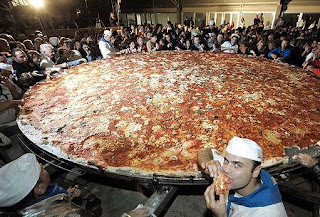 A genetically modified (GM) corn fortified with three vitamins has been created by European researchers.
A genetically modified (GM) corn fortified with three vitamins has been created by European researchers.
The modifications make the growing corn, or maize, produce large amounts of beta carotene and precursors of vitamin C and folic acid.
The development marks the first time any plant has been engineered to make more than one vitamin.
The creators argue the corn could help improve diets in poorer nations, but anti-GM campaigners are sceptical.
Doctored diet
Reported in the PNAS journal, the research details how the South African white corn was created.
The team, led by Dr Paul Christou from Spain's University of Lleida, transferred genes into immature embryos of a variety known as M37W.
The embryos were bombarded with metal particles coated with chunks of DNA that, if taken up by the embryo, would alter its internal biochemical processes to make it produce the vitamins.
Subsequent analysis of sample plants grown from the genetically modified seeds showed that the corn was indeed successfully manipulated into producing the vitamins.
The changes induced in the corn also persisted through a couple of generations of the plants, wrote the researchers.
The yield of vitamins "vastly exceeds" any produced by conventional plant breeding methods wrote Dr Christou and his colleagues, from universities in Spain and in Germany, in their paper.
Producing a plant that contains three vitamins could help those in poorer nations who subsist on one food and rarely eat a balanced diet, the scientists said.
Before now plants have been produced that are fortified with one vitamin. However, added the researchers, wide use of such plants might alleviate one deficiency and do nothing about the others.
By contrast, wrote the researchers, those eating 100-200g of the fortified corn would get almost all their recommended daily intake of vitamin A, and folic acid and 20% of the ascorbate they need.
Dr Christou told BBC News: "Our research is humanitarian in nature and targets impoverished people in developing countries. This specific project is targeted towards sub-Saharan Africa."
He added: "Our funding is exclusively from public sources so we are not encumbered by any commercial constraints."
Dr Christou said the success of the lab work was pushing the team to start field trials. Initial trials will be held in the US in 2010.
He said: "Once this is done we will be able to have enough data to try in Africa.
"We will soon embark on animal studies to generate efficacy and safety data, which will be required at some point," he added.
'Expensive technofixes'
Prof Johnathan Napier, research leader at the UK's Rothamsted Research Institute, said the work by Dr Christou and colleagues was similar to that done on "golden rice" but produced a crop with much higher levels of vitamin A.
He added that farmers and agriculturists had for centuries bred crops that resisted particular diseases, were easier to harvest or produced greater yields.
"With the advent of more advanced technologies we can select for less obvious traits that are more important like nutrition," he said.
However, he said, moving from the lab to the field and then to wide-scale use could take time.
"The approval process is rigorous and long-winded," he said. "But it's important to make sure that the technology works, is stable and is evaluated as well as possible."
Clare Oxborrow from campaign group Friends of the Earth sounded a note of caution about genetically modified crops.
Ms Oxborrow said it was "virtually impossible" to contain GM crops and to be sure that all the people eating them were getting the correct dose of what they had been modified to make.
She added people who lacked access to a balanced diet often lacked access to almost all foods, so simply fortifying staples would not solve their problems.
Rather than opt for "expensive, untested and potentially risky GM technofixes", she said "research efforts would be better placed ensuring that people are able to grow, or otherwise have access to, a diverse range of foods that will give many other health benefits."
Ms Oxborrow said golden rice, fortified with vitamin A, had been available for many years but was still not widely used or commercialised.
She said: "Supporting families to grow green leafy vegetables in their communities can ensure sufficient levels of vitamin A, as well as a host of other nutrients and vitamins that a narrow GM fix would not even begin to solve."

































































